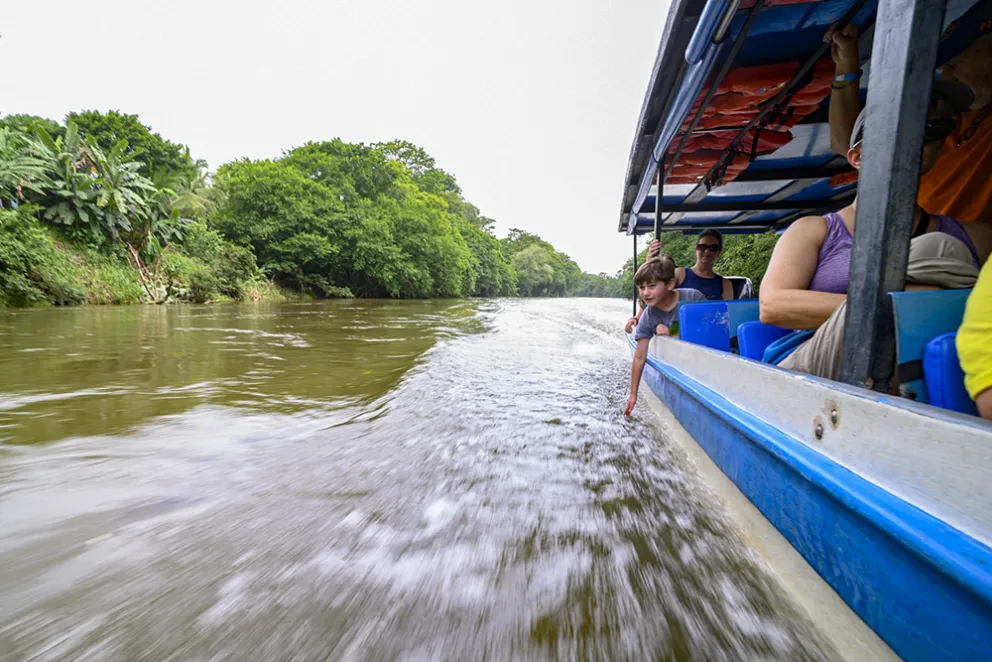
(text and photos by Kristen Grace) Kristen Grace is a staff photographer and digital asset manager at the University of Florida Museum of Natural History. In February of 2019 a photo from a self-assigned story in Mexico won Best in Show in the Monthly Image Competition. The success of that project led to another self-pitched chance to accompany UF Florida Museum staff members on a research trip, this time to Costa Rica.
It never hurts to ask… again and again.
Last Spring, I wrote about traveling with museum leadership to Mexico on an eco-tour with a local environmentally-conscious travel group. We journeyed into the mountains of Central Mexico to explore the overwintering colonies of hundreds of millions of monarch butterflies. That was a self-pitched assignment. I assumed the answer would likely be no due to cost.
But it was a yes.
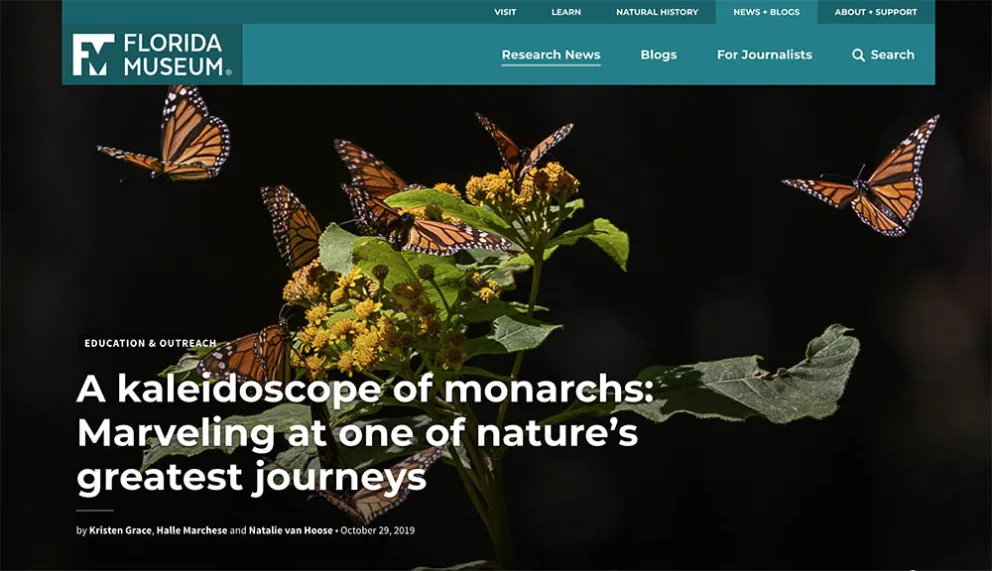
The University of Florida Museum of Natural History website article on the monarch butterfly story
So, when the idea of a new program coordinated by Holbrook Travel and featuring museum experts was proposed, I asked again.
Again, the answer was yes.
This new program was led by Dave Blackburn, the Museum’s herpetology expert, and was designed as a family rainforest camp where families explored the diversity of Costa Rica together in a science-centric engagement. This approach aligns perfectly with the Museum’s mission statement: Inspiring People to Care About Life on Earth.
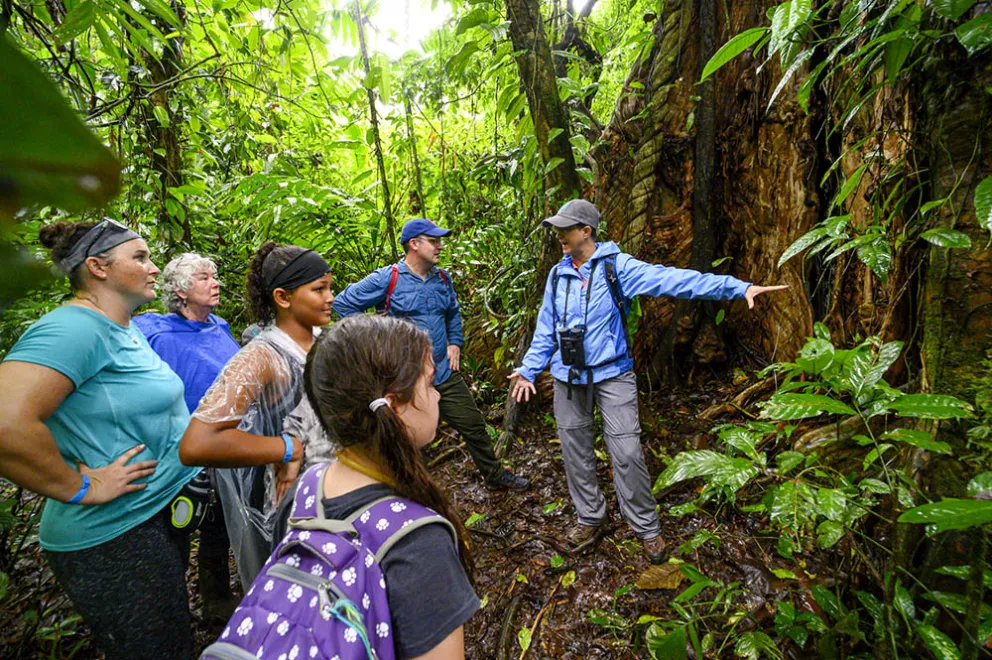
In the rain forest in Costa Rica
Dave Blackburn and museum educator Tina Choe taught the participating families how to use scientific tools in the field and to capture, identify and photograph in a lab-like setting. We went early morning birding with local guides and took night hikes with flash lights and saw everything from howler monkeys to sloths to snakes, frogs and lizards. The best part was when Dave led the kids into a creek in the rainforest. He gave them nets and tanks and let them loose in wild, mucky water while the parents watched nervously from the trail.
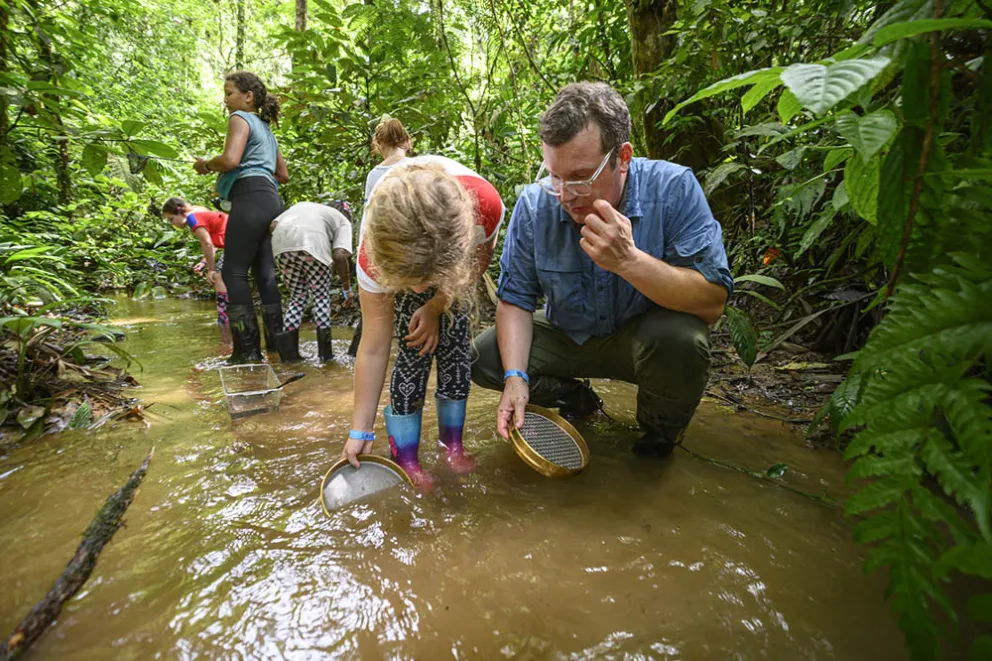
Dave Blackburn instructs a young participant.
The hardest part about this assignment was that (staying true to its name) it rains constantly in the rainforest. Protecting my gear from 100% humidity and being ready for a downpour at any moment while hiking with a group and capturing dynamic photos of both people and nature on the fly indeed kept me on my toes. I learned a lot.
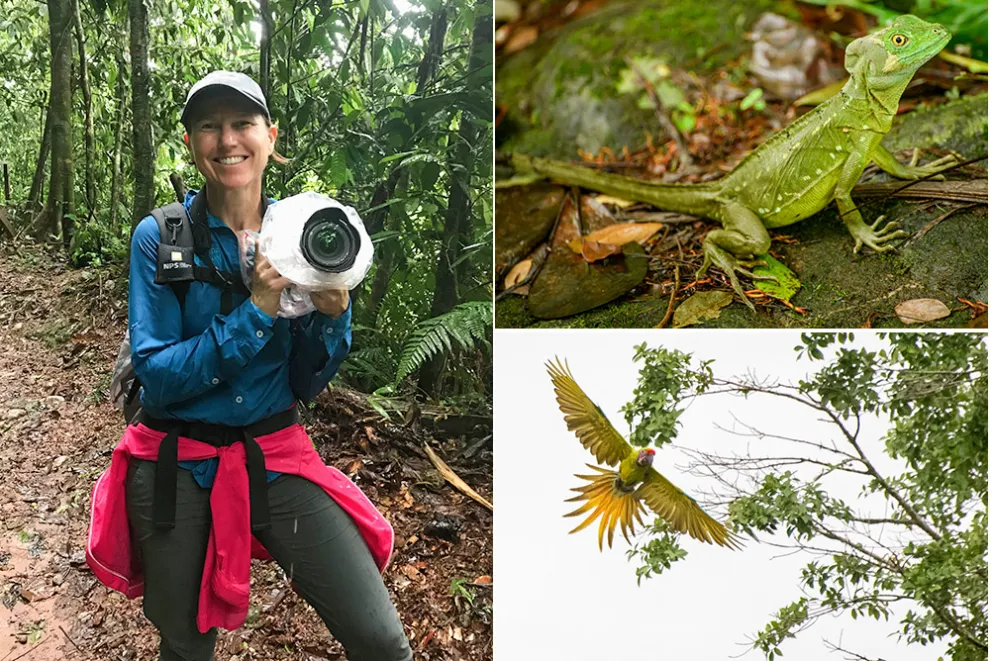
Kristen Grace keeping her gear dry while photographing the local wildlife: Above right, a Basilisk, or "Jesus Lizard." It gets its name because it can run across water. Below right, an endangered Great Green Macaw.
It is in the interest of the Museum’s marketing department to cover these travel programs not only because they feature our researchers engaging with people from all over in far off places about science and the wonders of nature, but a portion of each participant cost goes back to research at the museum. We are also able to utilize the content brought back, both stills and video, for a variety of purposes.
It is refreshing that leadership is supportive of turning to our visuals team for more projects of this nature. The images are far more dynamic and have a broader impact on both the Museum and the University of Florida. It’s assignments like these that bring credibility to the institution. We recently climbed to number 7 among public universities in the 2020 edition of the U.S. News & World Report, and we are ranked high among public research universities in the nation. The Museum is a top-5 university-based museum, and a top-3 university-based natural history museum, so it makes sense to flaunt the cool stuff our researchers do.
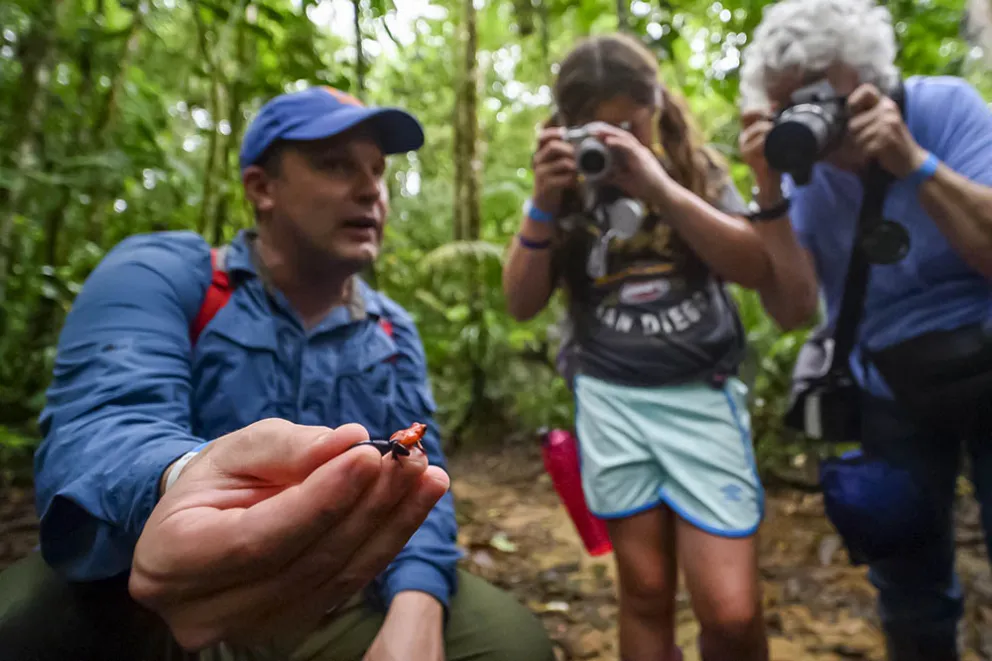
Dave Blackburn holds a Blue Jean Dart Frog, also known as a poison dart frog.
While we still have to photograph our researchers in lab settings and collections, it is nice to finally be able to follow them into the field and engage with students and the general public alike. Just two weeks prior to the Costa Rica trip, our science writer and myself accompanied the Museum’s shark expert, along with his students, into the field to cover undergrads learning how to catch and tag sharks, collect tissue samples and data, and prepare specimens for museum collections. The class was stationed for a week at a field lab located on an island in the Gulf of Mexico. The students stayed in a Civil War era light house and experienced the challenges of the Florida summer elements.
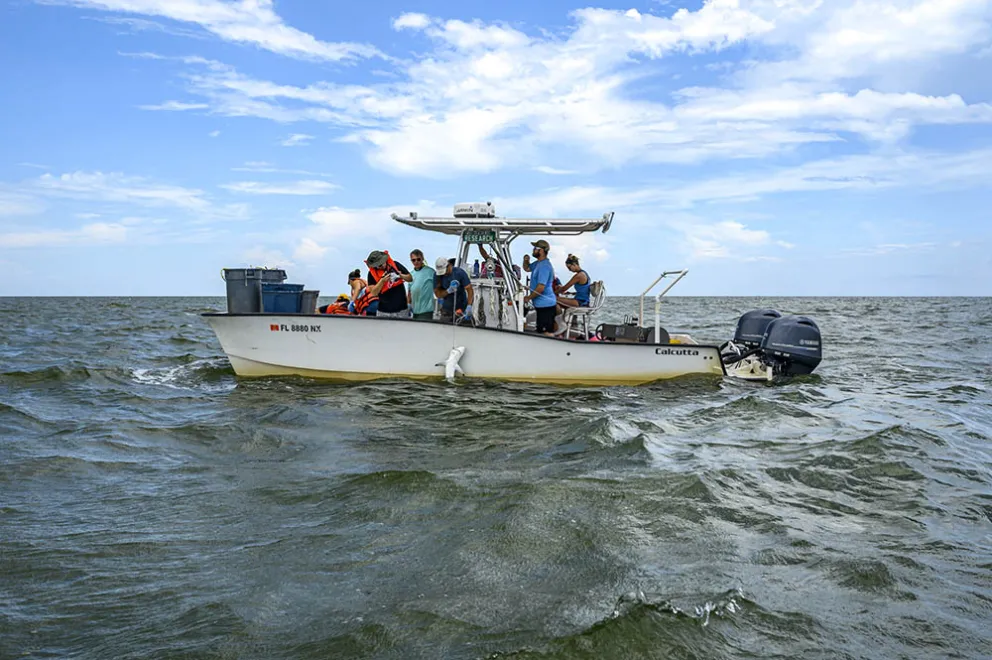
Shark research in the Gulf of Mexico
It’s pictures like these that will help families make decisions about where to find unique and rich educational experiences for their college-aged kids. They highlight the passion that our faculty and researchers have to teach, engage and provide valuable real-life skills in the field of science, and help future and current students see what a non-traditional class looks like, and hopefully inspire them to take one or two.
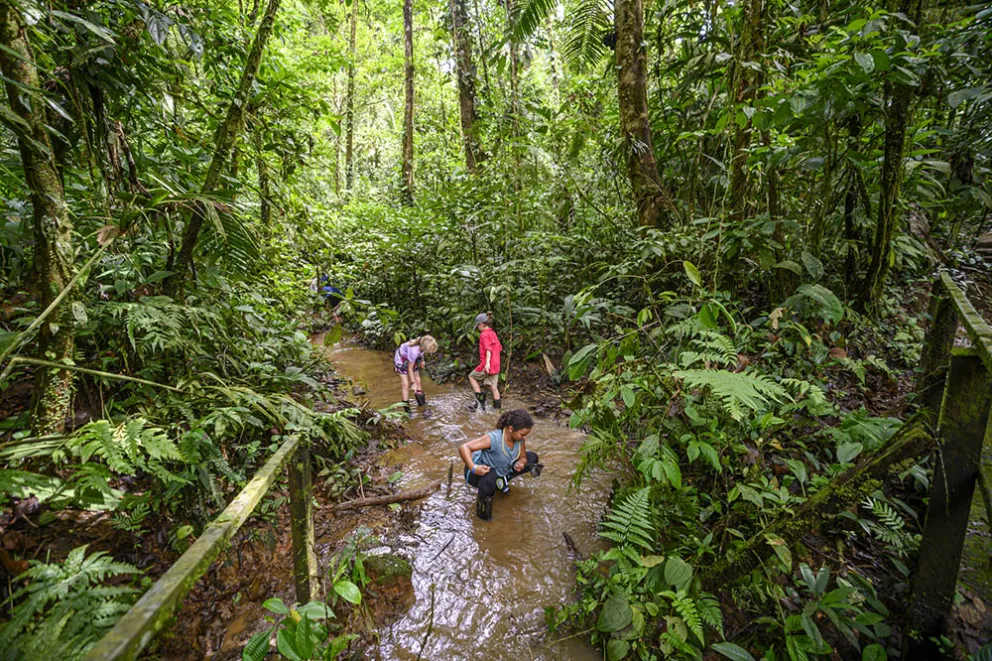
But to return to the first sentence of this article: It never hurts to ask. I’ll continue to push the limits and ask when I feel there are visual stories to tell.
Tips for pitching an idea:
- Clearly define the benefit to the institution for the project
- Provide a detailed outline of what you hope to accomplish
- Share the idea with your creative team to develop ways the images/story can be used and repurposed for ultimate bang-for-buck, use these ideas to help pitch the assignment
- Know what you are getting into, don’t propose ideas you can’t follow through on
Lessons learned from these two trips:
- Allow yourself an appropriate amount of time to follow through on proposed ideas – it takes a lot longer than you may think to process content, conduct interviews for videos, edit, write, design layout and develop an action plan for sharing content while keeping up with regular assignments
- I learned that it was harder than I expected to shoot video and stills simultaneously to produce both photo and video content upon return.
- Things don’t always turn out the way you envisioned – be flexible
- Lean on your creative team to help produce dynamic content post assignment
As with the monarch story, I hope to create a multimedia essay about Costa Rica, as well as produce a video about the positive impacts of eco-tourism. (The final product for the monarch expedition can be seen here.)
______________________________________________
"Why didn't the skeleton cross the road? He didn't have the guts!" Ideas, stories, critiques welcome any time. Email editor Matt Cashore, mcashore@nd.edu.